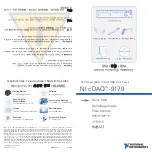
Appendix A: Additional Guidelines and Equipment Details
51
Dell EMC PowerEdge MX
Networking Architecture Guide
Chassis
MX9116n FSE port group
Physical Port Numbers
10
Port group 5
25 and 26
Figure 37. Recommended MX7000 chassis connection order
The Dell EMC PowerEdge MX7000 SmartFabric requires a minimum of two uplink
connections to a Top of Rack (ToR) switch. This example shows how to optimize
connections from the MX9116n FSEs on the PowerEdge MX7000 to the Dell EMC
Networking Z9100-ON ToR switch.
The Z9100-
ON groups interfaces into “tiles” with shared memory buffers as shown in
Figure 38. This design distributes uplinks from each Scalable Fabric to optimal ports. As
shown in Figure 39, it is recommended that each chassis fabric uplink from the MX9116n
FSEs be connected to a different tile on the Z9100-ON.
Note:
Figure 39 only displays the connections for Fabric A. Fabric B will be connected to the red
"tiles". Any subsequent chassis will be connected in a similar fashion using the other "tiles" on the
switch. See Table 7 for port connection information.
Figure 38. Z9100-ON Tile Distribution
Figure 39 displays the uplink connections from two MX9116n FSEs in two chassis. The
two chassis provide the uplinks for a group of up to 10 chassis. Chassis 3-10 each have
four MX7116n FEMs, which connect only to the MX9116n FSEs in the first two chassis of
the respective group. A second set of 10 chassis would start with chassis 11 and 12, if up
to 20 chassis are required. Chassis 1-2 and 11-12 each have two MX9116n FSEs and two
MX7116n FEMs.
While any QSFP28 port can be used for Ethernet connections, the last two QSFP28 ports,
interfaces 43 and 44, can be used for Ethernet or FC connectivity.
Figure 39 shows the use of all four QSFP28 ports on each of the MX9116n FSEs in fabric
A. If ports 43 and 44 are needed for other connections, only ports 41 and 42 need to be
connected to the Z9100-ON spine switches.
Connecting to
the Dell EMC
Networking
Z9100-ON spine












































